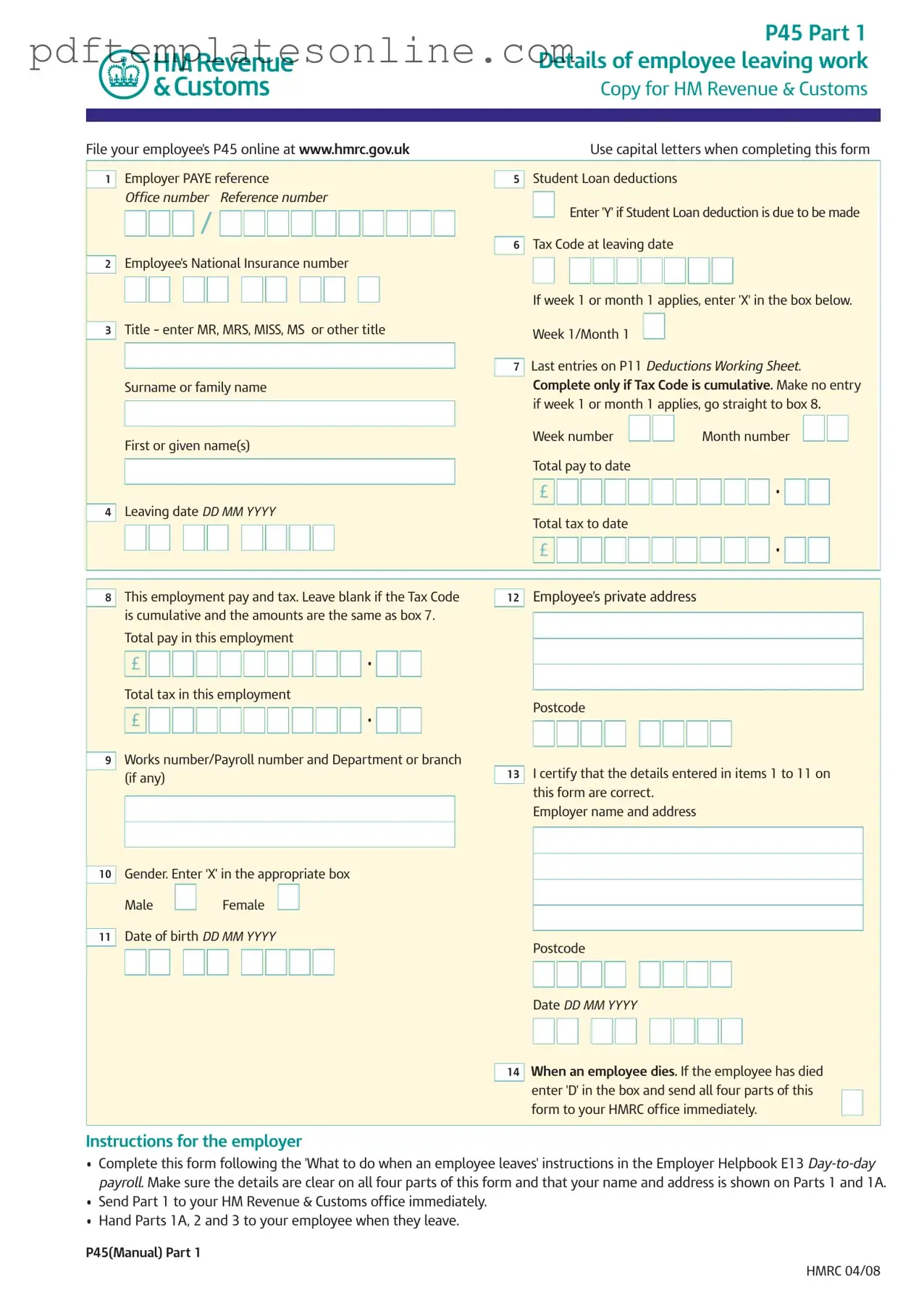Filling out the P45 form can be a straightforward task, but there are common mistakes that people often make. One frequent error is not using capital letters where required. The form specifically asks for capital letters in certain sections, such as the employee's name and address. Failing to do this can lead to confusion and delays in processing.
Another mistake is neglecting to enter the correct National Insurance number. This number is crucial for tax and social security purposes. If it's incorrect or missing, it can complicate the employee's tax records. Always double-check this information before submitting the form.
Many individuals also forget to indicate whether the employee's tax code is cumulative. This is done by completing the appropriate box. If the tax code is cumulative and this detail is not provided, it can result in inaccurate tax deductions in the future.
People often overlook the importance of the leaving date. This date must be accurate to ensure the employee's records are correct. An incorrect leaving date can cause issues with tax filings and benefits. It’s essential to enter the date in the correct format, as specified in the form.
Another common oversight is not certifying the details at the end of the form. The certification is a declaration that the information provided is correct. Without this signature, the form may be considered incomplete, leading to further complications.
Some individuals also forget to provide the employee’s total pay and tax to date. This information is vital for the new employer and helps in calculating future tax deductions. Leaving this blank can create confusion and lead to incorrect tax calculations.
Additionally, failing to keep a copy of the P45 can be a mistake. Employees should retain their parts of the form for their records. This is particularly important for tax returns or if there are any discrepancies in the future.
Lastly, many people do not read the instructions that accompany the form. These instructions provide valuable information on how to complete the form correctly and what to do with the different parts. Taking a moment to read through these can save a lot of time and trouble later on.
